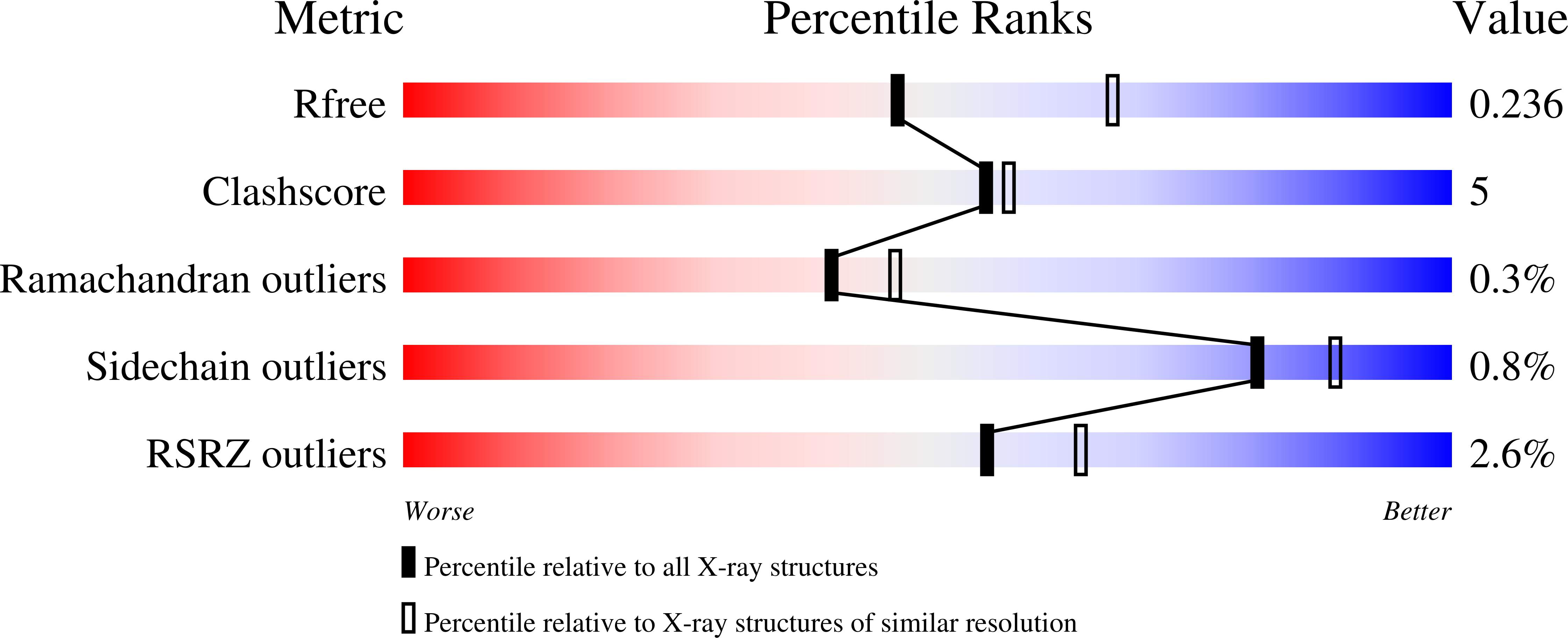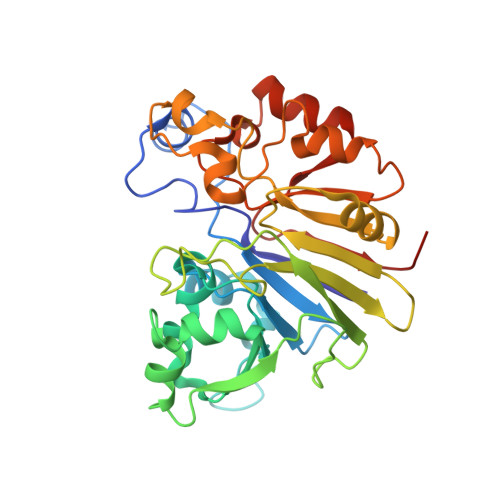Discovery of Hydroxylase Activity for PqqB Provides a Missing Link in the Pyrroloquinoline Quinone Biosynthetic Pathway.
Koehn, E.M., Latham, J.A., Armand, T., Evans 3rd, R.L., Tu, X., Wilmot, C.M., Iavarone, A.T., Klinman, J.P.(2019) J Am Chem Soc 141: 4398-4405
- PubMed: 30811189
- DOI: https://doi.org/10.1021/jacs.8b13453
- Primary Citation of Related Structures:
6E13 - PubMed Abstract:
Understanding the biosynthesis of cofactors is fundamental to the life sciences, yet to date a few important pathways remain unresolved. One example is the redox cofactor pyrroloquinoline quinone (PQQ), which is critical for C1 metabolism in many microorganisms, a disproportionate number of which are opportunistic human pathogens. While the initial and final steps of PQQ biosynthesis, involving PqqD/E and PqqC, have been elucidated, the precise nature and order of the remaining transformations in the pathway are unknown. Here we show evidence that the remaining essential biosynthetic enzyme PqqB is an iron-dependent hydroxylase catalyzing oxygen-insertion reactions that are proposed to produce the quinone moiety of the mature PQQ cofactor. The demonstrated reactions of PqqB are unprecedented within the metallo β-lactamase protein family and expand the catalytic repertoire of nonheme iron hydroxylases. These new findings also generate a nearly complete description of the PQQ biosynthetic pathway.
Organizational Affiliation:
Department of Chemistry and California Institute for Quantitative Biosciences , University of California-Berkeley , Berkeley , California 94720-3220 , United States.

















